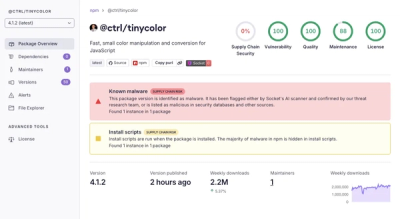Svelte-Skeleton-Loader
Make beautiful, animated loading skeletons that automatically adapt to your app.
Written for svelte from react-loading-skeleton

Basic usage
Install by npm/yarn with svelte-loading-skeleton.
<script>
import Skeleton from 'svelte-loading-skeleton';
</script>
<Skeleton/>
<Skeleton count={5}/>
Principles
Adapts to the styles you have defined
The <Skeleton> component is designed to be used directly in your components,
in place of content while it's still loading.
Unlike other libraries, rather than meticulously crafting a skeleton screen to
match the font-size, line-height or margins your content takes on,
use a <Skeleton> component to have it automatically fill the correct dimensions.
For example:
<script>
import Skeleton from 'svelte-loading-skeleton';
</script>
<div style="font-size: 20; line-height:2;">
{#if title && body}
<h1>{title}</h1>
{body}
</div>
{:else}
<h1><Skeleton /></h1>
<Skeleton count={10} />
{/if}
...will produce the correctly-sized skeletons for the heading and body sections
without any further configuration of the <Skeleton> component.
This ensures the loading state remains up-to-date with any changes
to your layout or typography.
Don't make dedicated skeleton screens
Instead, make components with built-in skeleton states.
In addition to keeping the styling in-sync, here are some other reasons to do this:
- Components represent all possible states it can be in - loading included.
- It allows for more flexible loading patterns - in the example, it's possible to have the
title load first, and then the body, while having both pieces of content show loading skeletons at the right time.
Theming
Using a <SkeletonTheme> component, you can easily change the colors of all
skeleton components below it in the Svelte hierarchy:
<script>
import Skeleton, { SkeletonTheme } from "react-loading-skeleton";
</script>
<SkeletonTheme color="#202020" highlightColor="#444">
<p>
<Skeleton count={3} />
</p>
</SkeletonTheme>;
Count
count: Number, defaults to 1
<Skeleton count={5} />
Number of loading skeleton lines.
Duration
<Skeleton duration={2} />
duration: Number, defaults to 1.2
Duration is how long it takes do one cycle of the skeleton animation.
Width
width: Number | String | null, defaults to null
<Skeleton width={100} />
Width of the skeleton. Useful when the skeleton is inside an inline element with
no width of its own.
Height
height: Number | String | null, defaults to null
<Skeleton height={100} />
Height of the skeleton. Useful when you don't want to adapt the skeleton to a text element but for instance
a card. Also needed for the prop circle (see below).
Wrapper
wrapper: svelte:component | null, defaults to null
<style>
a {
border: "1px solid #ccc",
display: "block",
font-size: 16,
line-height: 2,
padding: 20,
margin-bottom: 10,
width: 100,
}
</style>
<a>
<slot />
</a>
<Skeleton wrapper={Box} />
Prop for wrap the skeleton in a custom component.
Circle
circle: Boolean, defaults to false
<Skeleton circle={true} height={50} width={50} />
Prop for making the skeleton look like a circle, for when you are creating a user card with a profile picture for instance.
ClassName
class: String, defaults to ""
<Skeleton class='foobar' />
Prop for adding custom CSS classname to the skeleton.




